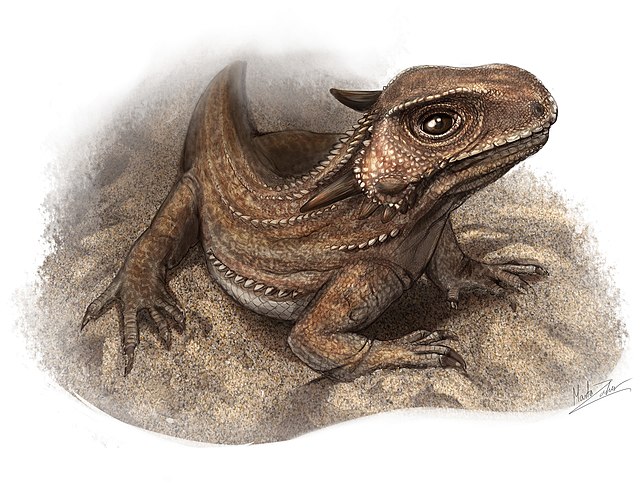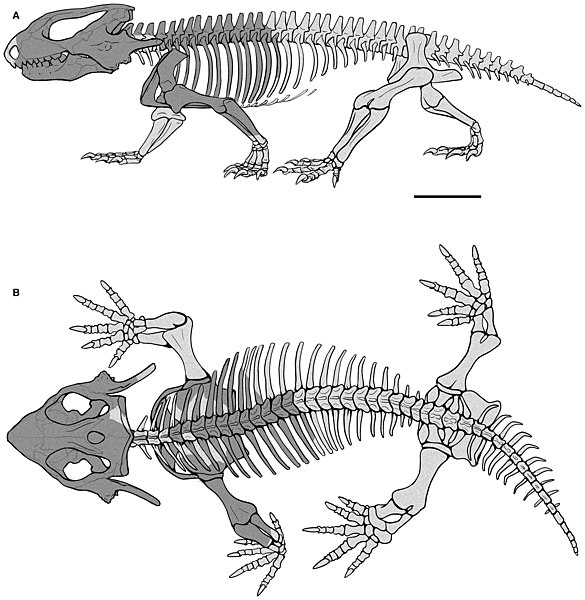Procolophonomorpha is an order or clade containing most parareptiles. Many papers have applied various definitions to the name, though most of these definitions have since been considered synonymous with modern parareptile clades such as Ankyramorpha and Procolophonia. The current definition of Procolophonomorpha, as defined by Modesto, Scott, & Reisz (2009), is that of as a stem-based group containing Procolophon and all taxa more closely related to it than to Milleretta. It constitutes a diverse assemblage that includes a number of lizard-like forms, as well as more diverse types such as the pareiasaurs. Lee 1995, 1996, 1997 argues that turtles evolved from pareiasaurs, but this view is no longer considered likely. Rieppel and deBraga 1996 and deBraga and Rieppel, 1997 argue that turtles evolved from sauropterygians, and there is both molecular and fossil (Pappochelys) evidence for the origin of turtles among diapsid reptiles.
Image: Kapes bentoni life restoration
Image: Scutosaurus restoration
Parareptilia ("near-reptiles") is an extinct subclass or clade of basal sauropsids/reptiles, typically considered the sister taxon to Eureptilia. Parareptiles first arose near the end of the Carboniferous period and achieved their highest diversity during the Permian period. Several ecological innovations were first accomplished by parareptiles among reptiles. These include the first reptiles to return to marine ecosystems (mesosaurs), the first bipedal reptiles, the first reptiles with advanced hearing systems, and the first large herbivorous reptiles. The only parareptiles to survive into the Triassic period were the procolophonoids, a group of small generalists, omnivores, and herbivores. The largest family of procolophonoids, the procolophonids, rediversified in the Triassic, but subsequently declined and became extinct by the end of the period.
Skeleton of Kapes bentoni, a procolophonid from the Middle Triassic of England



